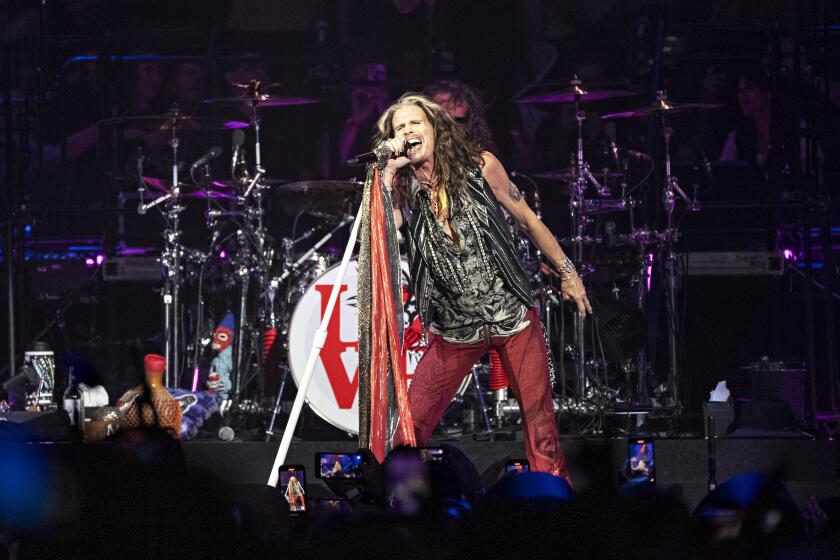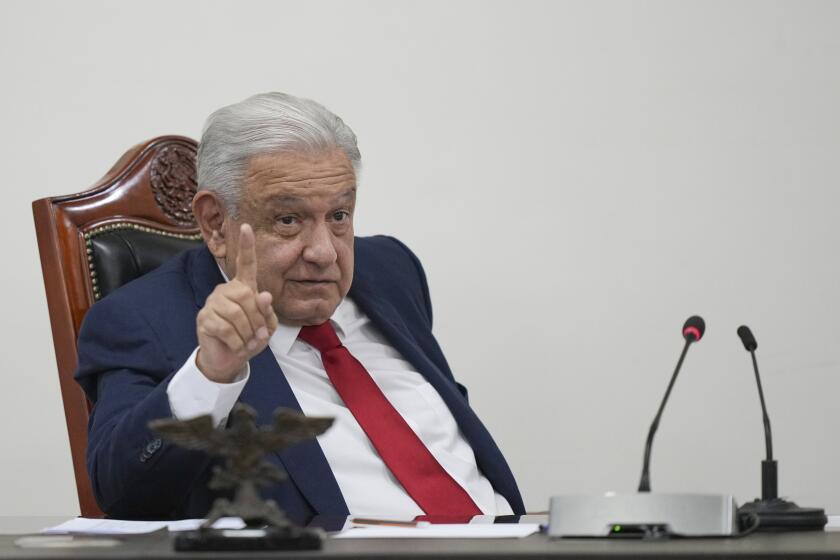High Court Revisits Case of Racial Bias in Jury Selection
The Texas death penalty case before the Supreme Court on Monday had a familiar ring to it.
Thomas Miller-El, a black man, was convicted in 1986 by a nearly all-white jury; and on Monday, the court for the second time heard allegations that Dallas prosecutors had used color-coded cards to evaluate potential jurors.
“Do not take Jews, Negroes, Dagos, Mexicans or a member of any minority race on a jury, no matter how rich or how well educated. They will not do on juries,” the prosecutors were told in a manual that was issued in 1963 and used for many years afterward.
Last year, the Supreme Court, in an 8-1 decision, sent the case back to the U.S. 5th Circuit Court of Appeals in New Orleans, with instructions to take a new look at the inmate’s appeal. “The culture of the district attorney’s office [in Dallas] in the past was suffused with bias against African Americans,” Justice Anthony M. Kennedy wrote.
Rather than take that strong hint, the appeals court simply reinstated its ruling and denied Miller-El’s bid for a new trial. Its judges agreed with the prosecutors’ argument that most of the black potential jurors had been excluded because they were opposed to the death penalty.
On Monday, the high court -- sounding a bit exasperated -- went through the same set of arguments again.
And this time, most of the justices sounded as though they were prepared to rule that Miller-El’s trial had been unconstitutional.
“Race was the tipping factor” when potential jurors were evaluated, said Seth Waxman, a former U.S. solicitor general representing the Texas inmate. “It was done for the deliberate purpose of minimizing the number of African Americans on the jury.”
While the selection of a jury for the Miller-El trial appears to offer a blatant example of racial bias, his case illustrates a more difficult problem for the court.
On the one hand, the justices have been wary of using new procedural rules to upset convictions from years ago. At times, they have said they will not apply new rules to old cases.
On the other hand, they are troubled when lower courts refuse to apply basic standards of fairness, even when the issue arises in an old case.
Two years ago, the high court voted to take up Miller-El’s case days before he was to be executed. There appears to be little doubt of his guilt. Based on the testimony of witnesses, he was convicted of killing a Dallas motel clerk during a robbery.
But his defense lawyers questioned the fairness of the trial and his sentencing hearing before a jury whose members, with one exception, were white. In 1986, shortly after his trial, the Supreme Court ruled it was unconstitutional for prosecutors to use race as a reason for excluding potential jurors.
Most of the justices said Monday that the race bias in Miller-El’s case seemed obvious. Justice Stephen G. Breyer read a statement from one potential black juror who said he supported the death penalty and would impose it if the state asked for it. He was struck from the jury pool. Meanwhile, a white woman said she was troubled by the death penalty and said she was not sure she could impose it. She was included on the jury.
This, Breyer said, is strong evidence of bias in the jury selection.
Only Justice Antonin Scalia defended the prosecutors. “If there happens to be different attitudes toward the death penalty among the black jurors, you can’t fault the prosecutors for striking blacks” from the jury pool, he said.
In last year’s ruling, only Justice Clarence Thomas dissented, agreeing with the prosecutors that removing the black jurors was legitimate. But he said nothing during Monday’s argument.
More to Read
Sign up for Essential California
The most important California stories and recommendations in your inbox every morning.
You may occasionally receive promotional content from the Los Angeles Times.











